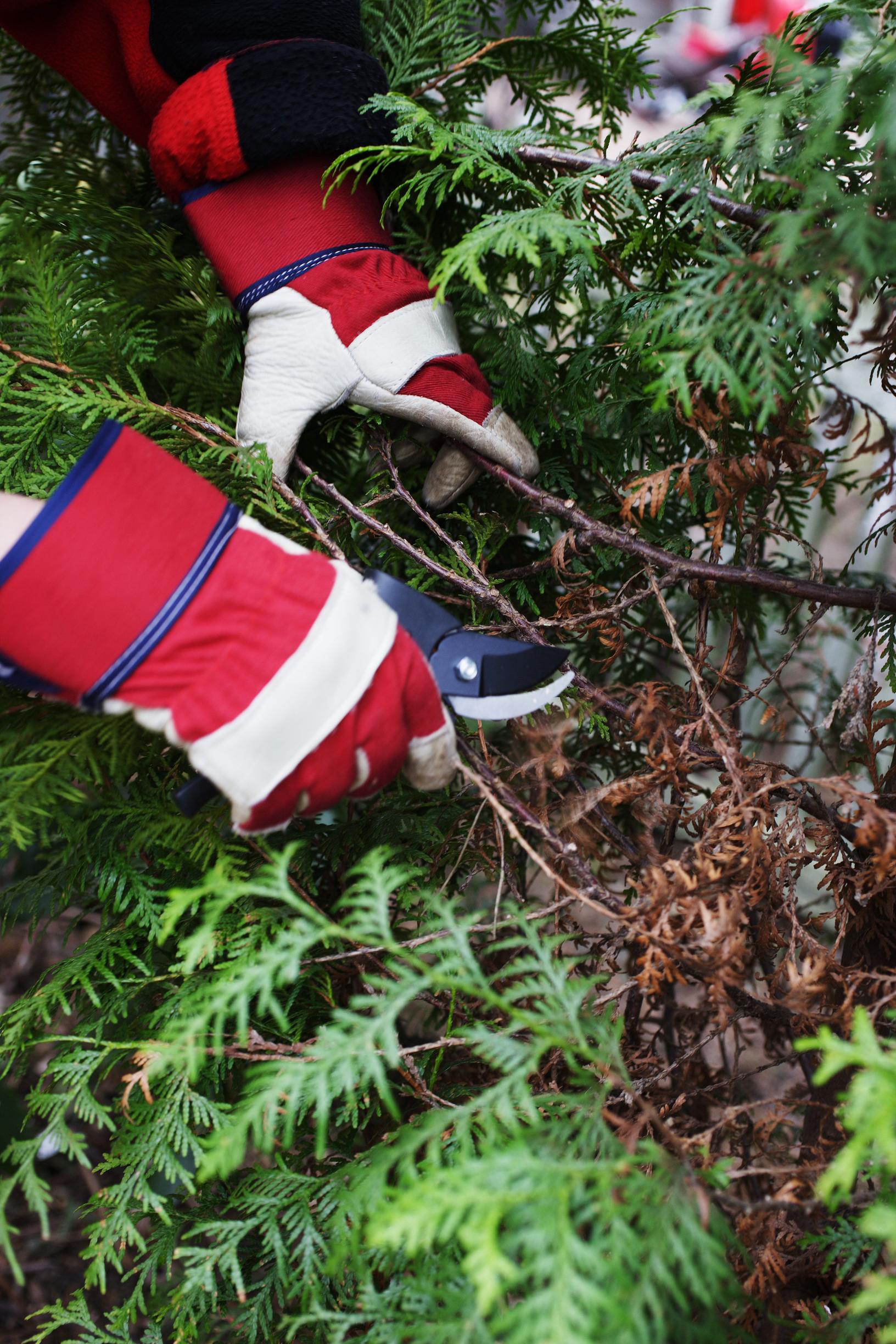
Arborvitae turning brown—what to do? Expert answers to the most common arborvitae problems
Arborvitae problems are often caused by an unsuitable location or conditions. Explore the most common arborvitae issues and discover our expert solutions.
Arborvitae seedlings are turning brown—what should you do?
A slight “yellowing” in spring is typical of arborvitae (Thuja occidentalis). The color usually returns to normal over the summer without any additional measures. However, if your arborvitae keeps browning and the needles dry out, the spring sun is likely the cause. In that case, prune the winter-damaged areas back until you reach healthy growth.
Spring sunlight browned my Emerald Green arborvitae—is there anything I can do?
Arborvitae tolerates pruning well, so trim off any browned parts. Keep watering as usual and watch for new green growth on the branches over the summer. If no new shoots appear, the arborvitae is dead.
Can an arborvitae survive in a sunny location even if the branches turning brown near the trunk?
Arborvitae can produce new growth even from woody branches and tolerates damage better than many other conifers. Remember to water it regularly and protect it from spring sunlight.
Arborvitae’s natural habitat is somewhat moist. If a young, small-rooted sapling is planted in a scorching spot, it will need plenty of water until the roots spread out enough to reach a wider water source. Unfortunately it can be challenging to keep a sunny spot sufficiently moist, especially if the summer is hot.
In its first few years, arborvitae needs a sun cover from late February until the ground thaws. The cover should be light-colored and airy—a black trash bag won’t do.
Why do arborvitae seedlings turn black?
Blackening that starts at the base of a seedling may be caused by cold-adapted fungi. Places where snow remains well into spring are ideal for these cold-loving fungal diseases. Overly tight winter protection can also make plants more susceptible to fungi.
Blackening can also indicate low oxygen at the roots, especially in damp, poorly draining clay soil. Lighten clay soil with sand to improve drainage.
Heavy snow has broken branches and tops—will an Emerald Green arborvitae recover from such damage?
Arborvitae tolerates pruning well and can sprout new growth even from woody branches. Over time, it can repair itself from snow damage, as long as there are living branches left after winter.


